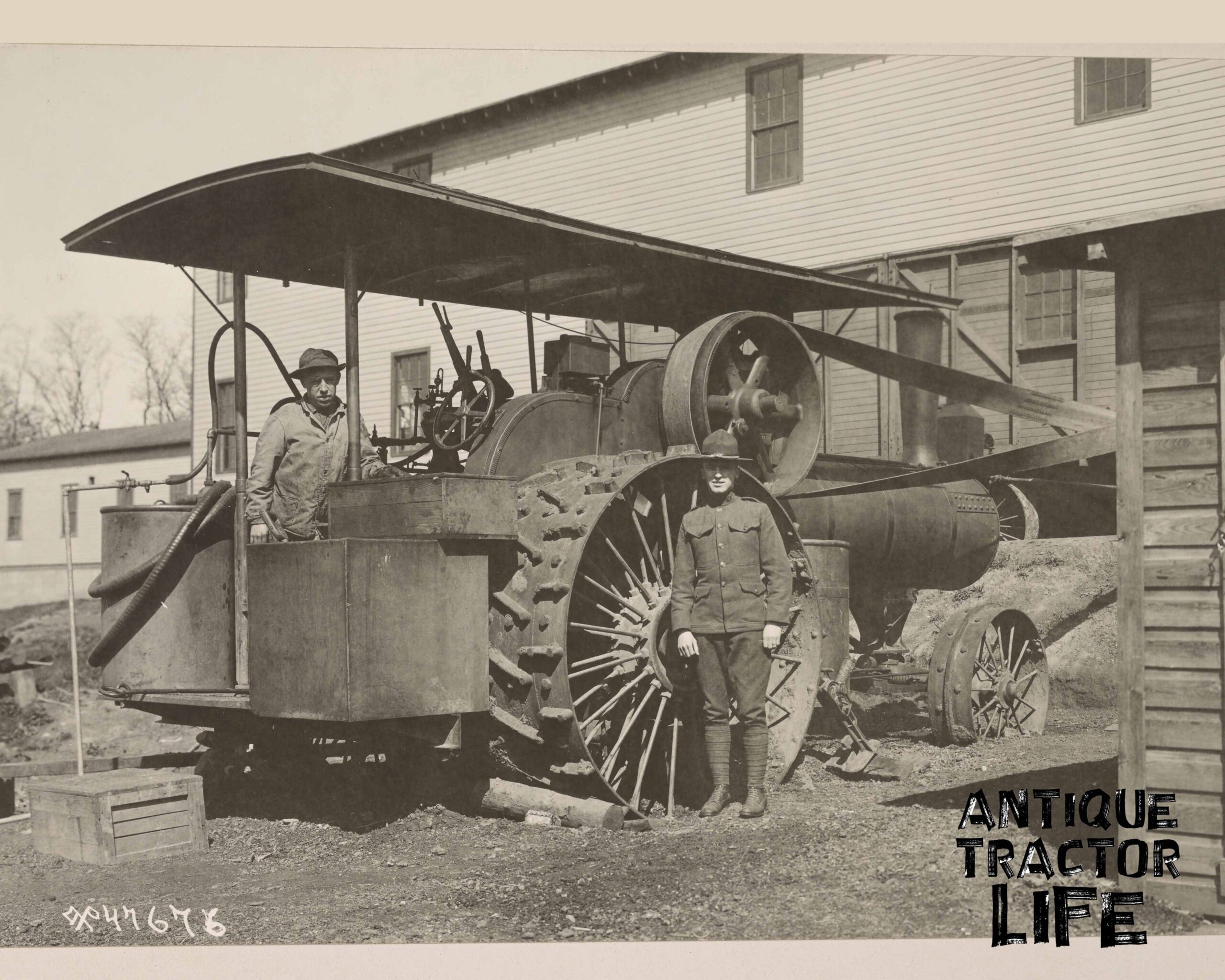Tractor History
Forgotten History: Resurrecting the WW 1 Mobile Military Laundry Unit & Its Steam-Powered Cleanliness

(Caption to photo above: Mobile Laundry Unit No. 3. The Case steam engine furnishes hot water and steam for laundry. Photo by Sgt. Combs, S. C.,Dated 4-29-1919)

(The men with the Mobile Laundry Unit No. 1 at Camp Meigs, Washington. D.C.; Photograph by Harris & Ewing, Washington, D.C.,taken 6-28-1918)
You tend to discover interesting photographs when sifting through hundreds of image results on the National Archives digital collection. I came across an image from 1919 labeled ‘Mobile Laundry Unit,’ sparking my curiosity since I wasn’t sure what that meant. So, I searched again, this time using those keywords. What I found was a series of photos from 1918 and 1919 featuring two distinct Mobile Laundry Units, both powered by a steam traction engine.
So what is a Mobile Laundry Unit?
A Mobile Laundry Unit is a portable facility equipped with laundry machines, water supply, and power sources. It is deployed in various locations, particularly in military contexts, to provide laundry services where traditional facilities are impractical. These units ensure clean clothing for personnel in the field during emergencies or military operations.
Steam Powered Mobile Laundry Unit
To some, this may not be very interesting, but I see it as a glimpse into forgotten history. These photographs don’t merely depict steam traction engines belted to wooden boxes; rather, they show how these wagons were configured, provide insight into their interiors, and showcase the men who operated them.
Operating a military mobile laundry unit wasn’t glamorous, but it needed to be done as a necessity to ensure a hygienic and comfortable environment for troops. Clean uniforms and bedding were vital not only for the well-being and morale of the soldiers but also for maintaining health and preventing the spread of diseases. In the midst of the challenges of war, these unsung heroes played a crucial role in upholding a sense of normalcy and contributing to the overall effectiveness of military operations.
Take a look at this series of photographs and observe how far we’ve come and, in some aspects, how far we haven’t.
Hopefully, I’ll continue to uncover interesting nuggets like this as I explore more of the online digital database.
By Boomgarden, 2024


(Laundry wagons drawn by tractors. Developed by Laundries Br., Salvage Div., Director of Purchase, Storage, and Traffic. Photo author unknown, 12-14-1918)

(Mobile Laundry Unit No. 1 Camp Meigs, Washington, D.C, Photo by Harris & Ewing Washington, D.C., 6-28-18)

(Mobile Laundry Unit No. 1 Camp Meigs, Washington, D.C, Photo by Harris & Ewing Washington, D.C., 6-28-18)

(Wagons joined together to form laundry building, tractor attached by pule at one side, hose at the other, Photo author unknown, 12-14-1918)

(Wagons joined together to form laundry building, belt on outside carries power from one section to another. Photo author unknown, 12-14-1918)

(Doors of laundry open showing how the sections are joined. Note one half of side wall dropped to form floor, other half raised to form roof. Photo author unknown, 12-14-1918)

(Wagons joined together to form on building. Power supplied by tractor. Photo author unknown, 12-14-1918)

(Mobile Laundry Unit No. 3 showing front of the entire unit. When in transit, what is shown here as center floor and center roof are foled up making complete sides for cars. The steam traction engine pulls all four cars when moving from one place to another. The pipe leading from the tractor to trucks conveys hot water for washers in trucks and the belt from the flywheel on the tractor to wheel on the corner of the trucks turns the washers inside of laundry trucks. Photo by Sgt. Combs, S.C., 4-29-19, Fort Washington)

(Mobile Laundry Unit No. 3 showing side of No.1 and No.2 trucks and ends of No.1 and No.2 trucks. No.1 and 2 trucks carry a washer and a wringer each. No.3 truck carries a drying tumbler and an electric motor that drives tumbler. The tumbler is heated by steam from the tractor. Photo by Sgt. Combs, S.C., 4-29-19, Fort Washington)

(Wagon detached, showing machinery. Photo author unknown, 12-14-1918)

(Wagon detached, showing machinery. Photo author unknown, 12-14-1918)

(Wagon detached, showing machinery. Photo author unknown, 12-14-1918)

(Mobile Laundry Unit. No. 3, Assembly interior view of Unit looking from main drive end. Photo author unknown, January 1919.)

(Machinery used in the laundry. Photo author unknown, 12-14-1918)

(Machinery used in the laundry. Photo author unknown, 12-14-1918)

(General view of the interior of laundry. Photo author unknown, 12-14-1918)




0